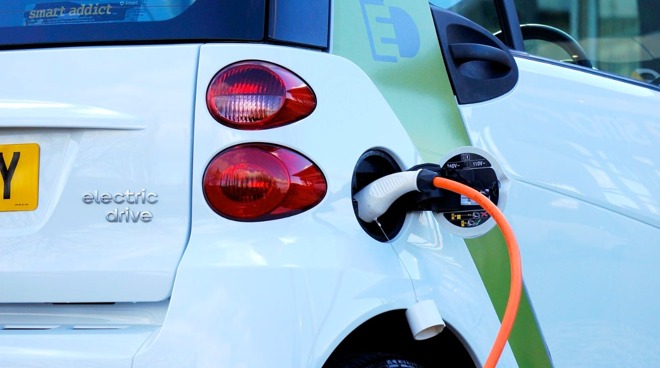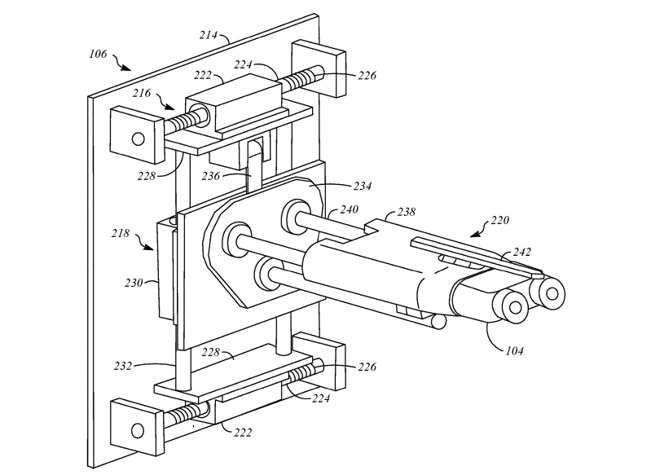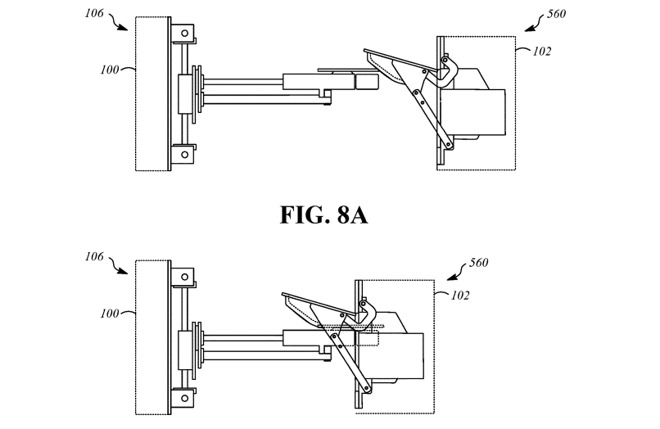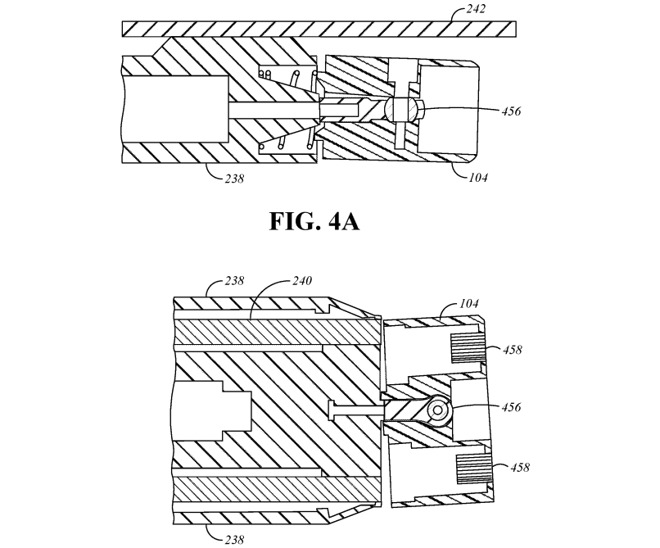Apple may adopt large-scale MagSafe technology for Apple Car charging
The Apple Car could have its own MagSafe-style charger alignment system, with contacts on a charging station automatically aligning perfectly with counterparts located on the electric car.

Current electric vehicles need drivers to plug in the charging cables manually
The often-rumored Apple Car has taken on many forms in speculation, but one repeated factor that crops up is its use of electricity to drive the vehicle. While it could take the form of a performance vehicle or a van, the suggestion it will be an electric vehicle has been quite prevalent.
If Apple were to create an electric car and offer it to the public in some form, it does have to counter the problem of recharging the vehicle. Unlike petrol and diesel vehicles that hold fuel and are left alone at night, electric vehicle users are used to the idea of recharging the car overnight, as the hours without use is a perfect opportunity for such activity.
It's not that the car battery will run down overnight, so ultimately needing to find a charging point in the day is no different to having to find a petrol station. However, charging is inevitably slower than filling up at a pump, and the overnight hours are ideal -- if users remember to plug in.
In a revised patent newly granted and called "Charging station with passive alignment mechanism," Apple suggests such an engineering system that could allow for drivers to park up and for the vehicle to start charging immediately.
The system largely involves a charging station with a charging plug designed to slot into a receiving socket on the vehicle itself. The plug is attached to sliding rods that can move the position of the plug around vertically and horizontally, to allow for imperfect parking attempts by the driver and for variances in the height of the vehicle.
While the height of the socket on the vehicle is likely to be the same across models and even manufacturers, there are still some potential ways for the height to vary. Two examples would be additional weight put into the vehicle as load, and the pressure of the tires.

The charging plug could shift sideways and vertically to match the car's socket.
In operation, the vehicle would have a cover for its charging socket that opens by moving upward, as it approaches a charging station. The driver, or self-driving vehicle system, has to attempt to position the vehicle as close to its intended end point as possible, to maximize the chance of a suitable connection with the charging station.
The parking job wouldn't have to be perfect, just within a range that allows the charging plug to make a connection. The rest of the patent explains the plug can refine its position to where it is needed, and can do so relatively passively.
The charging point's movement by the sliding rods allow the plug to be pushed back by the vehicle, such as if the driver has moved the vehicle closer to the charging station, to minimize damage from the plug impacting the vehicle.

The flap on the Apple Car could open and divert the charging plug into the socket.
For added protection of the potentially fragile charging plug, a plate is located above the component, to handle any heavy impacts. It will also help to guide the plug in a downward slide to meet the socket by pressing against the vehicle's flap, which is also angled to encourage movement towards the socket itself.
To further increase the chances of a suitable connection, the area surrounding the socket could also act as a funnel, diverting the plug into the receptacle. Apple also suggests the use of a magnet to secure the coupling.
Lastly, the charging plug itself will be able to pivot vertically and horizontally, altering the angle to ensure a perfect seating, once maneuvered into the right place.

The plug could move around for a snug fit in the charging point.
The patent lists its inventors as Matthew M. Torok, Foster D. Collins, and William M. Price.
Apple files numerous patent applications on a weekly basis, but while the existence of a patent filing indicates areas of interest for Apple's research and development efforts, there's no guarantee that Apple will use the ideas in a future product or service.
Recharging an electric car has cropped up a few times in Apple's patents, especially in ways that do not require much in the way of driver assistance, aside from parking a car properly.
In July 2019, the "Wireless Charging Alignment System," Apple suggests how a self-driving system could park the car in a position ideal for wireless charging, using a transmitter embedded in the parking space.
The same year, a "Charging System" was proposed that consisted of a small robotic device that could move along a floor under a vehicle, one that would raise a charging element close to a receiver on the car to perform wireless charging.
Such systems do not have to be tied to a stationary vehicle. In 2018, Apple thought about a "Peloton" of self-driving vehicles that are close enough together in a convoy that they can connect together. The peloton would reduce drag to save fuel, and could allow for vehicles to share energy reserves with each other, minimizing the need to stop and refuel.
Read on AppleInsider

Current electric vehicles need drivers to plug in the charging cables manually
The often-rumored Apple Car has taken on many forms in speculation, but one repeated factor that crops up is its use of electricity to drive the vehicle. While it could take the form of a performance vehicle or a van, the suggestion it will be an electric vehicle has been quite prevalent.
If Apple were to create an electric car and offer it to the public in some form, it does have to counter the problem of recharging the vehicle. Unlike petrol and diesel vehicles that hold fuel and are left alone at night, electric vehicle users are used to the idea of recharging the car overnight, as the hours without use is a perfect opportunity for such activity.
It's not that the car battery will run down overnight, so ultimately needing to find a charging point in the day is no different to having to find a petrol station. However, charging is inevitably slower than filling up at a pump, and the overnight hours are ideal -- if users remember to plug in.
In a revised patent newly granted and called "Charging station with passive alignment mechanism," Apple suggests such an engineering system that could allow for drivers to park up and for the vehicle to start charging immediately.
The system largely involves a charging station with a charging plug designed to slot into a receiving socket on the vehicle itself. The plug is attached to sliding rods that can move the position of the plug around vertically and horizontally, to allow for imperfect parking attempts by the driver and for variances in the height of the vehicle.
While the height of the socket on the vehicle is likely to be the same across models and even manufacturers, there are still some potential ways for the height to vary. Two examples would be additional weight put into the vehicle as load, and the pressure of the tires.

The charging plug could shift sideways and vertically to match the car's socket.
In operation, the vehicle would have a cover for its charging socket that opens by moving upward, as it approaches a charging station. The driver, or self-driving vehicle system, has to attempt to position the vehicle as close to its intended end point as possible, to maximize the chance of a suitable connection with the charging station.
The parking job wouldn't have to be perfect, just within a range that allows the charging plug to make a connection. The rest of the patent explains the plug can refine its position to where it is needed, and can do so relatively passively.
The charging point's movement by the sliding rods allow the plug to be pushed back by the vehicle, such as if the driver has moved the vehicle closer to the charging station, to minimize damage from the plug impacting the vehicle.

The flap on the Apple Car could open and divert the charging plug into the socket.
For added protection of the potentially fragile charging plug, a plate is located above the component, to handle any heavy impacts. It will also help to guide the plug in a downward slide to meet the socket by pressing against the vehicle's flap, which is also angled to encourage movement towards the socket itself.
To further increase the chances of a suitable connection, the area surrounding the socket could also act as a funnel, diverting the plug into the receptacle. Apple also suggests the use of a magnet to secure the coupling.
Lastly, the charging plug itself will be able to pivot vertically and horizontally, altering the angle to ensure a perfect seating, once maneuvered into the right place.

The plug could move around for a snug fit in the charging point.
The patent lists its inventors as Matthew M. Torok, Foster D. Collins, and William M. Price.
Apple files numerous patent applications on a weekly basis, but while the existence of a patent filing indicates areas of interest for Apple's research and development efforts, there's no guarantee that Apple will use the ideas in a future product or service.
Recharging an electric car has cropped up a few times in Apple's patents, especially in ways that do not require much in the way of driver assistance, aside from parking a car properly.
In July 2019, the "Wireless Charging Alignment System," Apple suggests how a self-driving system could park the car in a position ideal for wireless charging, using a transmitter embedded in the parking space.
The same year, a "Charging System" was proposed that consisted of a small robotic device that could move along a floor under a vehicle, one that would raise a charging element close to a receiver on the car to perform wireless charging.
Such systems do not have to be tied to a stationary vehicle. In 2018, Apple thought about a "Peloton" of self-driving vehicles that are close enough together in a convoy that they can connect together. The peloton would reduce drag to save fuel, and could allow for vehicles to share energy reserves with each other, minimizing the need to stop and refuel.
Read on AppleInsider

Comments
https://www.pluglesspower.com
Hah! Fortunately, my A3 e-Tron won't let me drive off if it is plugged in. (I know, because I've forgotten to unplug it a couple times when I first got it!) I imagine all PHEV and BEV have this feature.
Or even better yet, a charging system that takes five minutes to “fill ‘Er up!”
https://www.nissan-global.com/EN/TECHNOLOGY/OVERVIEW/wcs.html
There have been aftermarket wireless EV chargers for years. Here's one:
https://www.pluglesspower.com/learn-about-plugless/
Teslas are really ugly and old school looking. I hope Apple makes something that looks revolutionary.
There's an Asian guy on YouTube who makes Apple concepts if you can find him. He's the best because he thinks innovatively.
It’s just a patent, not even a rumor.
The problems are not insurmountable, but building a safety culture is a lot harder than designing their own processors. It takes time and a lot of blood to get right.